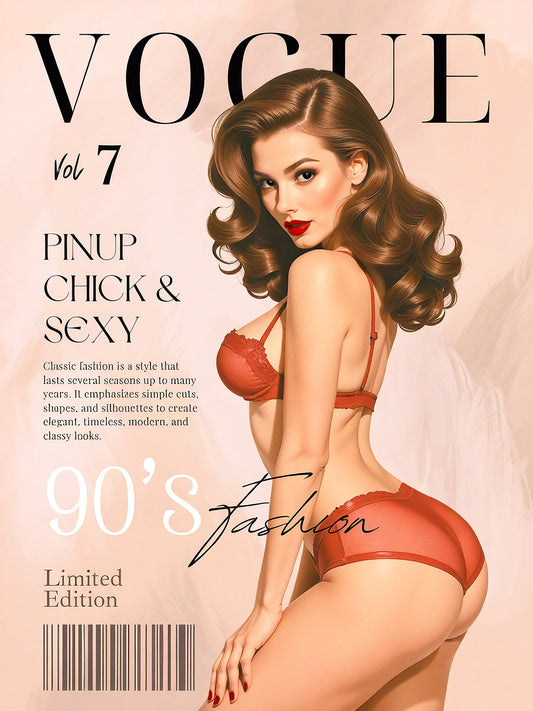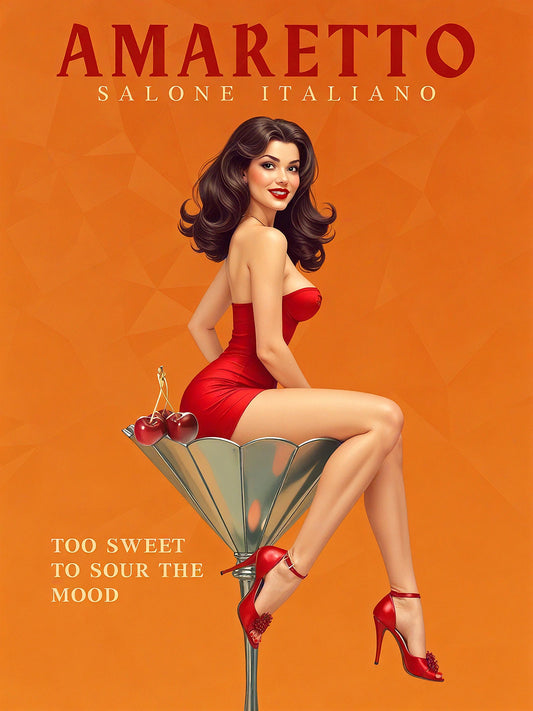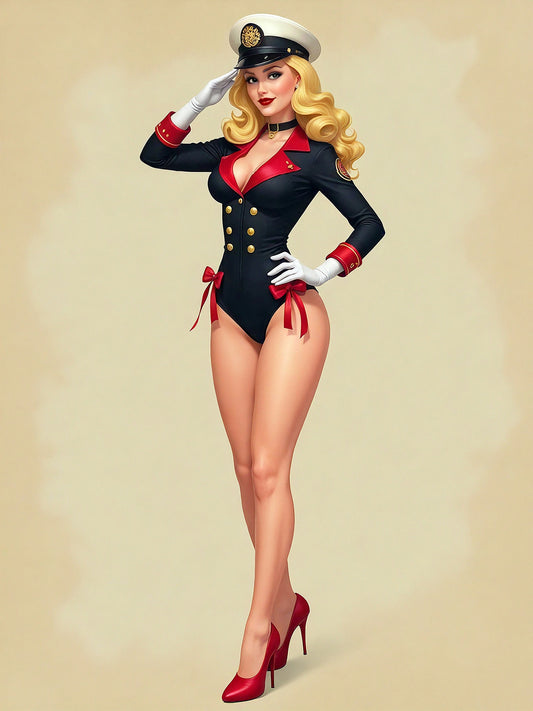Did You Know? Pin-Up Girls Were the Original Trendsetters!
Long before influencers ruled social media, pin-up girls set the standard for beauty, fashion, and confidence. These women weren’t just models—they were cultural icons whose influence extended from wartime posters to Hollywood and beyond.
If you’ve ever admired the vintage aesthetic of 50s pin-up models, you might be surprised to learn just how deeply embedded pin-up culture is in modern fashion, photography, and art. Let’s take a deep dive into the fascinating world of pin-ups!
The Birth of the Pin-Up: The Early Years
The concept of the pin-up girl dates back to the late 19th century, but it truly exploded in popularity in the 1920s and 30s. Illustrators like George Petty and Alberto Vargas created dazzling, airbrushed depictions of women that graced calendars, magazines, and advertisements. These early pinup art pieces laid the foundation for what would become an enduring cultural phenomenon.
One of the earliest pin up models was Evelyn Nesbit, whose images in the early 1900s set beauty standards for decades. But it wasn’t until the 1940s and 50s that pin-up girls became true pop culture icons.
World War II and the Rise of Pin-Ups as Morale Boosters
During World War II, pin-ups played a vital role in maintaining troop morale. Soldiers would "pin up" their favorite images of glamorous models, actresses, and illustrated beauties inside their lockers, on barracks walls, and even as nose art on bomber planes.
Famous pin up models of the 50’s like Betty Grable became legendary, with her famous swimsuit pose selling millions of copies to servicemen. Other wartime pin-ups included Rita Hayworth, Veronica Lake, and Jane Russell, all of whom brought a mix of elegance and playful sensuality to the genre.
Fun Fact: The U.S. military even encouraged pin-up posters as a way to keep soldiers' spirits high!
The 1950s: The Golden Age of Pin-Up Models
When the war ended, pin-ups didn’t fade away—they evolved. The 1950s pin-up models embraced the post-war boom in glamour and femininity, making way for some of the most iconic names in history:
- Bettie Page – The queen of pin-ups, known for her dark bangs, playful expressions, and stunning photography.
- Marilyn Monroe – She started as a pin-up before becoming a Hollywood legend.
- Jayne Mansfield – A blonde bombshell who personified the curves and confidence of pin-up culture.
This era also saw an explosion in pin-up photography, moving away from illustrated posters and into real-life magazine spreads. Playboy magazine, launched in 1953, helped cement pin-up models as more than just fantasy figures—they were mainstream icons.
The Evolution of Pin-Up Art: From the 60s to Today
As fashion changed in the 1960s and beyond, pin-up girls adapted. The 70s and 80s saw a decline in traditional pin up a styles, but the rockabilly and burlesque revival of the 90s brought them back into the spotlight.
Today, modern pinups continue to celebrate vintage beauty with a modern twist. Celebrities like Dita Von Teese and Katy Perry have redefined pin-up aesthetics for the 21st century, keeping the legacy of pin up girls alive.
Why Pin-Up Culture Still Matters Today
Pin-ups have always represented more than just beauty—they symbolize confidence, empowerment, and individuality. Whether it’s through vintage fashion, tattoos, or modern photography, the influence of pin-up models continues to thrive.
From the bombshell curves of the 50s pin-up models to today’s diverse interpretations, one thing remains clear: pin-up art is timeless.
Call to Action
Ready to celebrate your own pin-up style? Contact us today to start creating a custom portrait that brings out your inner pin-up model. Get Started
Frequently Asked Questions
What is pin up style fashion?
It includes high-waisted skirts, vintage dresses, bold red lips, and glamorous pin up hairstyles from the 40s–50s.
How can I get classic pin up hair?
Victory rolls, curls, and bandanas are signature looks — tutorials are available or you can request them in your portrait.
Can I dress like a pinup for my photoshoot?
Yes! Choose outfits that highlight curves, add bold makeup, and strike a confident retro pose.





